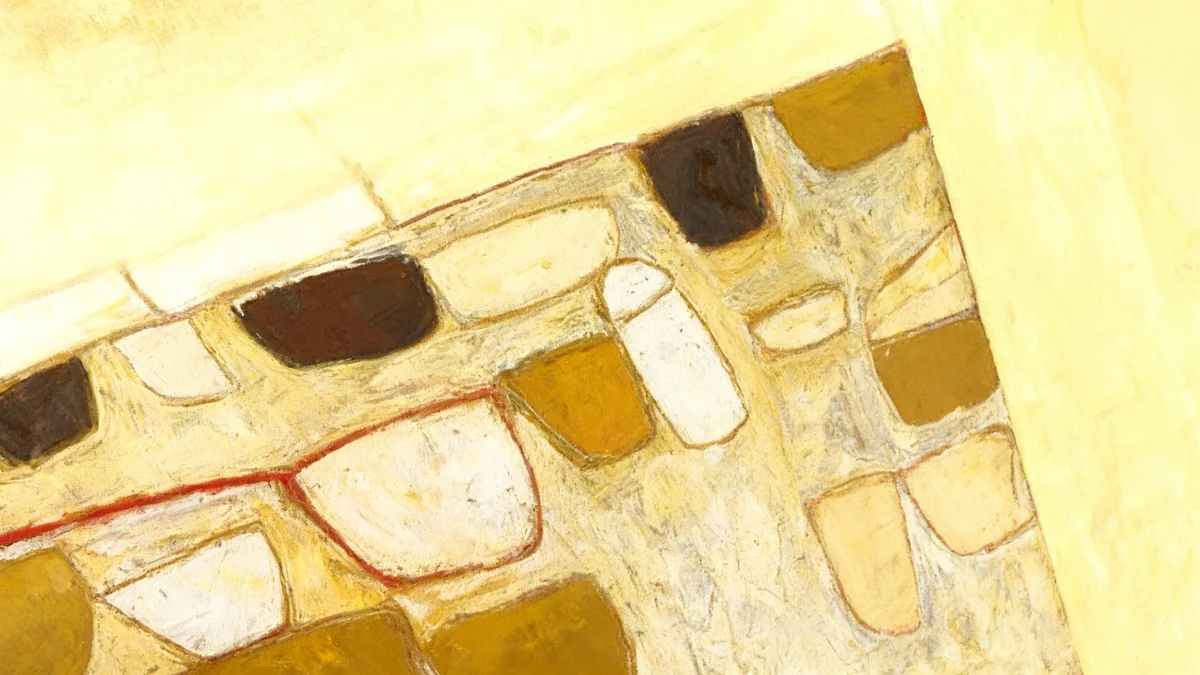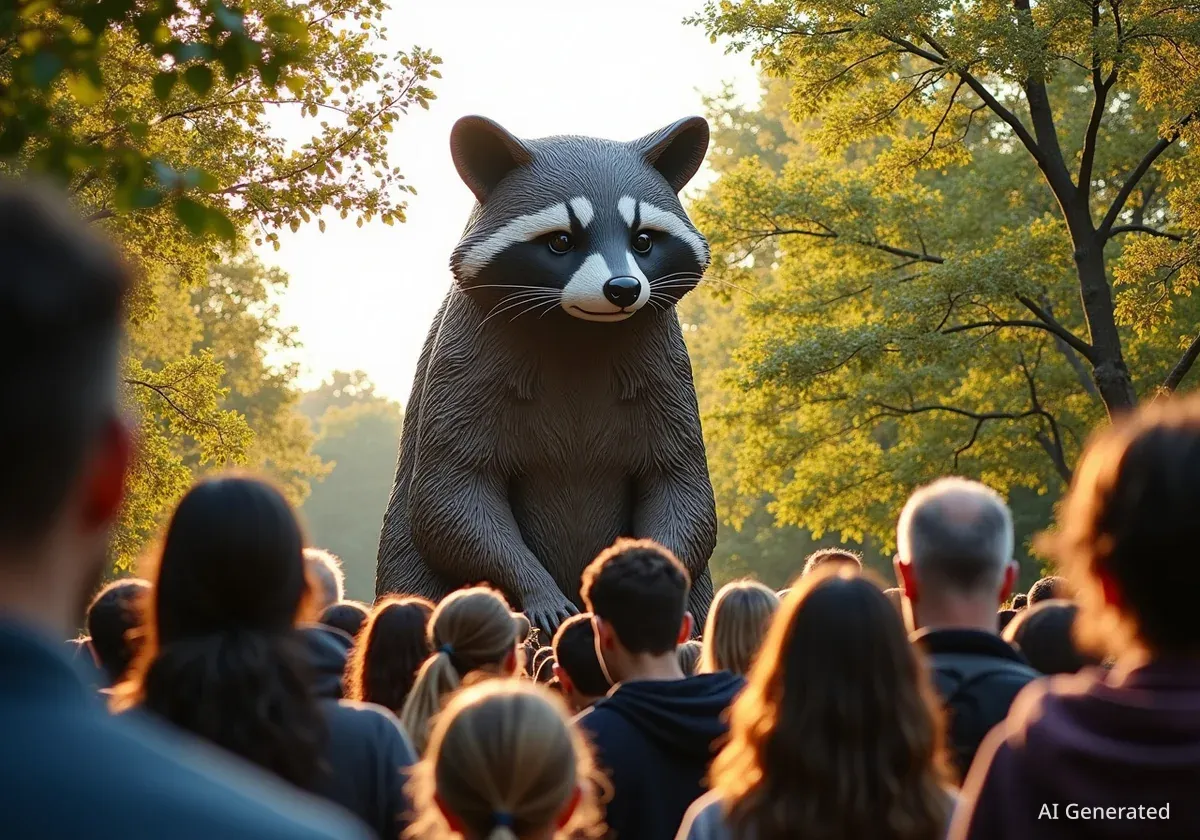Renowned Chinese dissident artist Ai Weiwei has unveiled his latest public art installation, 'Camouflage,' at Franklin D. Roosevelt Four Freedoms State Park in New York City. The large-scale work, which features thousands of cat images woven into netting, invites viewers to reflect on themes of democracy, human rights, and the enduring relevance of Franklin D. Roosevelt's Four Freedoms speech.
Key Takeaways
- Ai Weiwei's 'Camouflage' installation is at FDR Four Freedoms State Park.
- The artwork explores democracy, human rights, and FDR's Four Freedoms.
- It features netting filled with thousands of cat images.
- The installation draws inspiration from Ai's visit to Ukraine and his personal history.
- It aims to provoke public debate on freedom of speech and global conflicts.
Art and Activism Merge at Historic Site
The installation is part of a new public art initiative marking the 80th anniversary of the United Nations. This initiative seeks to engage artists in examining the current state of democracy and social justice around the world. Ai Weiwei, known for his blend of art and activism, was chosen as the first featured artist.
The Franklin D. Roosevelt Four Freedoms State Park provides a significant backdrop for Ai's work. Located on Roosevelt Island in New York's East River, the park is a monument to President Roosevelt's 1941 State of the Union speech. In this speech, FDR outlined four essential human freedoms: freedom of speech and worship, and freedom from want and fear. These principles later became foundational to the United Nations charter.
Historical Context: FDR's Four Freedoms
Franklin D. Roosevelt delivered his Four Freedoms speech on January 6, 1941. At a time when Nazi Germany was engulfing Europe in war, Roosevelt presented a vision for a future where these universal rights would be upheld globally. His words served as a moral compass for the United States as it considered joining the war effort and laid the groundwork for international human rights declarations.
The Meaning Behind 'Camouflage'
Ai Weiwei's choice of 'Camouflage' as a title and theme is deliberate. He first encountered camouflage in a wartime setting during a visit to the front lines in Ukraine. The artist explains his interest in the dual nature of camouflage: its ability to protect and hide, but also to mislead or obscure the truth.
The installation's playful element comes from the thousands of cat images integrated into the netting. These images carry multiple layers of meaning. They nod to Roosevelt Island's history as an animal shelter, highlight the suffering of animals in war, and reflect Ai's personal journey. He states, "I have been living three or four lives, so just like a cat. Normally, we say cats have nine lives. I already spend maybe eight of them."
"Art should be activism, because art is in questioning establishment. Art is in questioning what has already been as a fixed idea." – Ai Weiwei
A Career Defined by Questioning Authority
Ai Weiwei's life and work have consistently challenged established norms and political systems. Born in 1957, his early life was shaped by China's Cultural Revolution, during which his poet father was exiled. Ai spent 12 years in the U.S. starting in 1981, where he developed his provocative artistic style. His early works included intentionally breaking an ancient Han Dynasty urn, a symbolic act against historical and cultural dogma.
Despite initially collaborating with the Chinese government on the design of the 2008 Beijing Olympics Bird's Nest stadium, Ai later became a vocal critic. His investigation into flimsy construction and corruption following a 2008 earthquake, which resulted in thousands of deaths, led to his imprisonment and a four-year travel ban. He has since exhibited internationally, with retrospectives like 'Ai, Rebel: The Art and Activism of Ai Weiwei' at the Seattle Art Museum, and directed films such as the 2017 documentary 'Human Flow' on global migration.
Ai Weiwei's Early Life and Activism
- Born in 1957, son of a renowned poet.
- Family exiled during China's Cultural Revolution.
- Lived in the U.S. for 12 years, starting in 1981.
- Investigated corruption after the 2008 Sichuan earthquake.
- Imprisoned and faced a four-year travel ban by the Chinese government.
Reimagining Monuments for the Future
Howard Axel, who heads the Four Freedoms Park Conservancy, explained the vision behind the 'Art X Freedom' project. This initiative emerged from a national discussion about monuments and their role. Axel emphasizes the desire to make monuments look forward, not just back.
The installation at the park allows contemporary artists to overlay current issues onto a historical monument. Axel notes, "We are in a moment where this is a question of democracy and voting and rights and is in the headlines every day, a time of conflict not only directly related to camouflage, but certainly conflict in our public debate." The project aims to engage visitors in personal reflection, inviting them to write their thoughts on ribbons and tie them to the netting.
Current Challenges to Freedom
Ai Weiwei believes that the fundamental values of humanity, human rights, and freedom of speech are under threat, even in Western democracies. He points out that nearly 80 years after Roosevelt's call for these freedoms, speech is still at a difficult juncture, even in the United States. He views the West's discourse on humanity and democracy as a form of camouflage, suggesting that the reality on the ground often differs from the ideals expressed.
One powerful element in the installation is a neon sign displaying a Ukrainian proverb: "For some people war is war. For others, war is the dear mother." This quote directly references the ongoing conflict and its varied impacts on individuals. Ai Weiwei's work consistently pushes people to recognize their shared humanity and defend these essential values.
The 'Camouflage' installation will be on view until November 10, offering a powerful and timely reflection on global issues within a deeply symbolic American setting.




